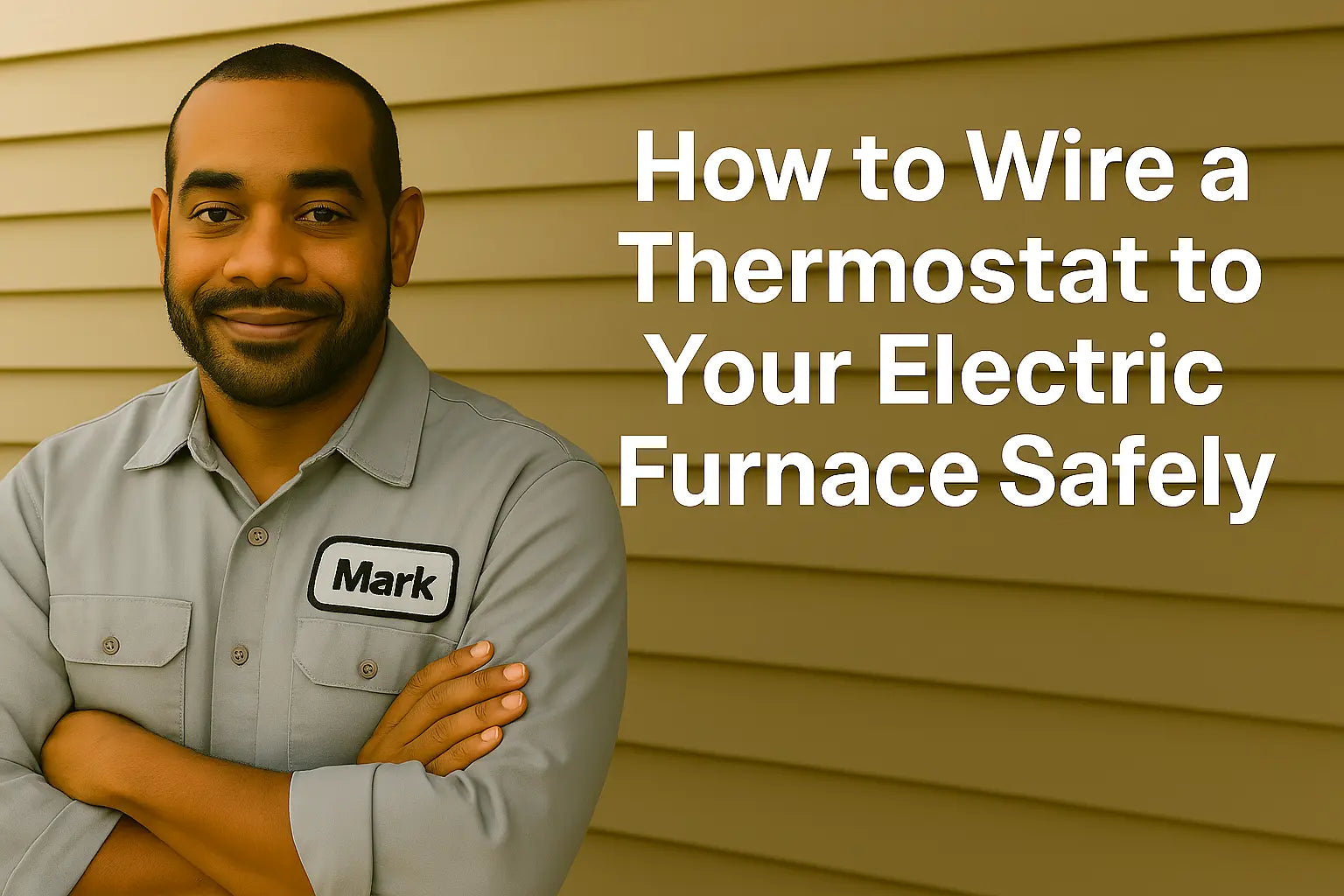Hey there, Mark here.
I’ve seen more than a few wires crossed—literally—when folks try wiring up their thermostats. Whether you’re installing a new unit or replacing an old one, this process can be totally DIY if you take it slow and follow the right safety protocols. Let’s get into it, step-by-step, and I’ll help you avoid the common pitfalls while getting your system running smoothly.
Step 1: Understand Your Thermostat and Furnace Wiring Setup
Before touching a wire, we need to understand what we’re looking at. Most modern thermostats and electric furnaces use a low-voltage (24V) control system, typically following the standard wire color coding:
-
Red (R): Power from the transformer
-
White (W): Heat signal
-
Green (G): Fan
-
Yellow (Y): Cooling (if you have a heat pump or A/C)
-
Blue or Black (C): Common wire (C-wire) for constant power
Want to double-check compatibility or wiring diagrams? Check out Energy.gov’s guide on thermostats for a solid overview.
Step 2: Turn Off the Power (Yes, Really 🔌)
I can’t stress this enough—always shut off the power at the breaker panel before you touch any wiring. Even though thermostat wires are low voltage, you’re likely working near high-voltage connections inside the furnace cabinet. Don’t take chances.
Use a non-contact voltage tester to double-confirm there's no live current. If you're new to that tool, here's a helpful explainer from The Spruce that'll walk you through using one correctly.
Step 3: Mount the Thermostat Base and Route the Wires
Once power is off, it’s time to get your thermostat on the wall. Run your wiring through the mounting plate and use a level to ensure it’s straight. Most smart thermostats like Nest or ecobee will tell you exactly where each wire goes, but older models might not.
Here’s a nice general resource from Bob Vila on installing thermostats if you want a visual reference.
Make sure there’s no damage or corrosion on the wires before you connect them. If you’re working with stranded wire (tiny copper threads), twist them cleanly and maybe even use ferrules for a neat connection. Trust me—it helps.
Step 4: Connect the Thermostat Wires Correctly
Connect the wires to their corresponding terminals on the thermostat base. Your furnace control board should match the same wire designations. For example:
-
Connect R to R (Power)
-
Connect W to W (Heat)
-
Connect G to G (Fan)
-
Connect C to C (Common) (if required by the thermostat)
Double-check the connections at both ends: the thermostat and the furnace’s control board. If you're unsure where your furnace control board is located or how to identify the terminals, MEP Academy has a great explainer on reading HVAC schematics that’ll boost your confidence.
Step 5: Restore Power and Test the System ⚡
After everything’s connected and secured, pop the thermostat onto the base and flip the breaker back on. Your thermostat should power up if you’ve connected the C-wire (or batteries if it's battery-operated).
Set it to heat mode and raise the temperature—then head over to the furnace and listen. You should hear the contactor click and the fan kick on after a short delay. If not, time to double-check connections.
Step 6: Bonus Tips for Smart Thermostat Users 📱
If you’ve installed a Wi-Fi thermostat, follow the manufacturer’s setup steps to connect to your network. Some models require you to register or set preferences via a mobile app.
Pro tip: If your furnace doesn’t have a C-wire, you may need a C-wire adapter. Don’t skip this part—many thermostats need constant power to work properly, especially smart ones.
Step 7: Safety and When to Call a Pro 👷
While wiring a thermostat is usually beginner-friendly, there are exceptions. If your furnace wiring looks messy, unmarked, or has been tampered with in the past, it’s best to consult a licensed electrician or HVAC tech. Electrical safety codes vary by region, and it’s always better to be safe than sorry.
And if you’re in doubt, call someone who’s certified—it might cost a bit upfront, but it could save you a blown control board or even a fire hazard.
Final Thoughts from Mark 👋
There you have it—a clean, safe, and effective way to wire your thermostat to your electric furnace. Whether you're upgrading to a smart system or just replacing an old dial-style unit, doing it right the first time can save you hours of headaches later on.
And hey—if you’re ever staring at a tangle of wires that look like spaghetti 🍝, don’t feel bad. We’ve all been there. Just take a step back, breathe, and double-check each step. You’ve got this!
If you’re in the market for a reliable electric furnace or want to learn more about your options, I recommend checking out the electric furnace collection at The Furnace Outlet. They have a solid selection, great prices, and everything you need to keep your home warm and efficient.
Need more installation and troubleshooting tips for your electric furnace? Visit my ultimate guide right here!
Stay safe, stay warm,
–Mark Callahan







